GILLETTE SUBSTAGE CONDENSER
MAKER: ANDREW ROSS
c. 1850
Author: Barry Sobel
Editor: Joseph Zeligs
DESCRIPTION:
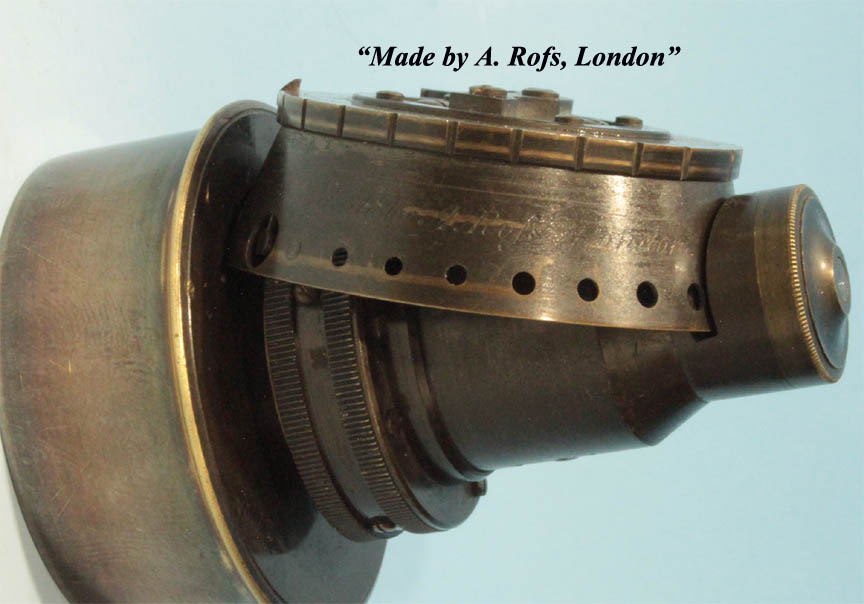
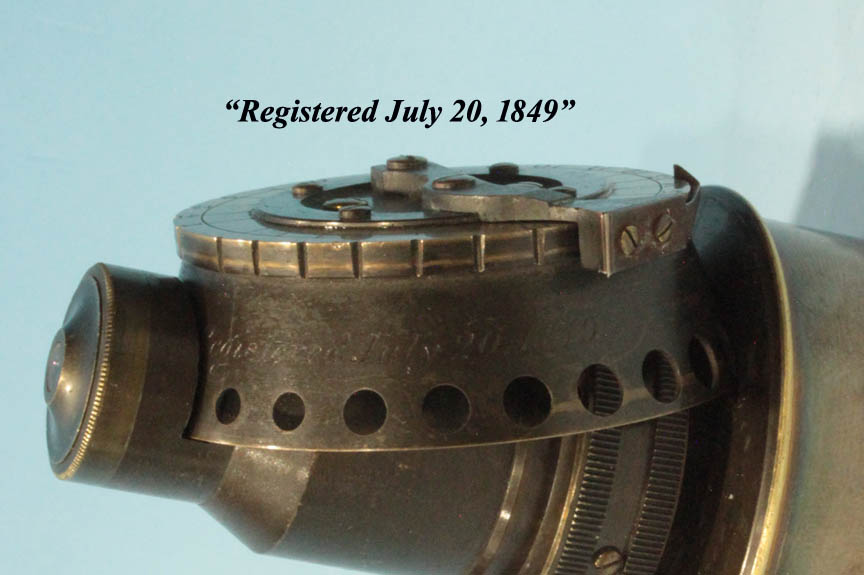
This multi-lensed achromatic condenser is signed on the conical rotating disk of apertures and stops: Made by A. Rofs, London Registered July 20, 1849
. It has a 2 inch barrel which fits into the 2 inch diameter Ross rack and pinion substage of about 1851. The conical disk has 19 apertures and 2 central stops
for dark ground illumination.
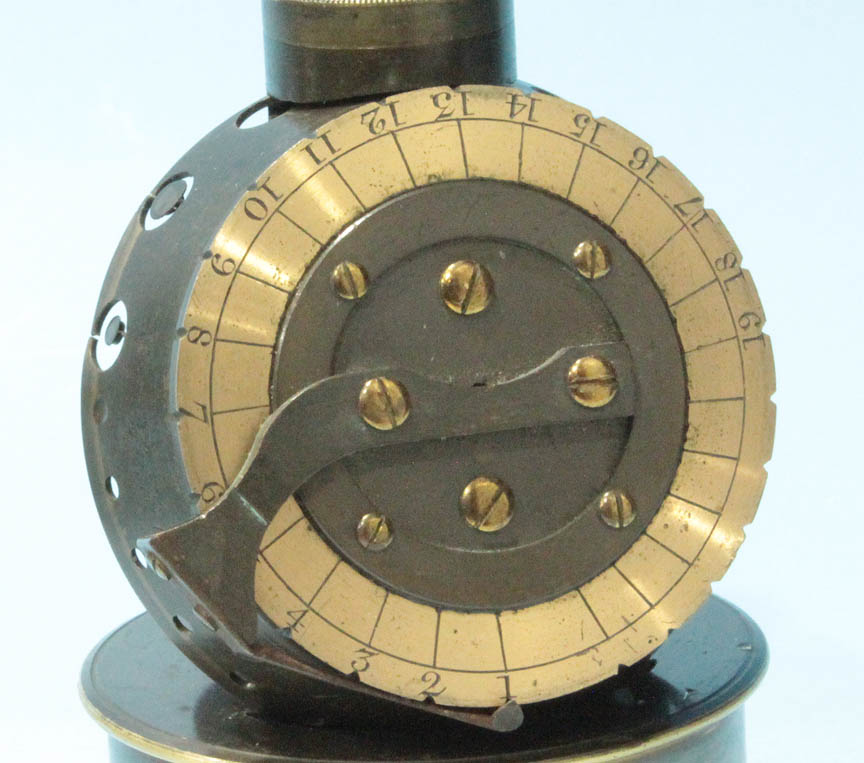
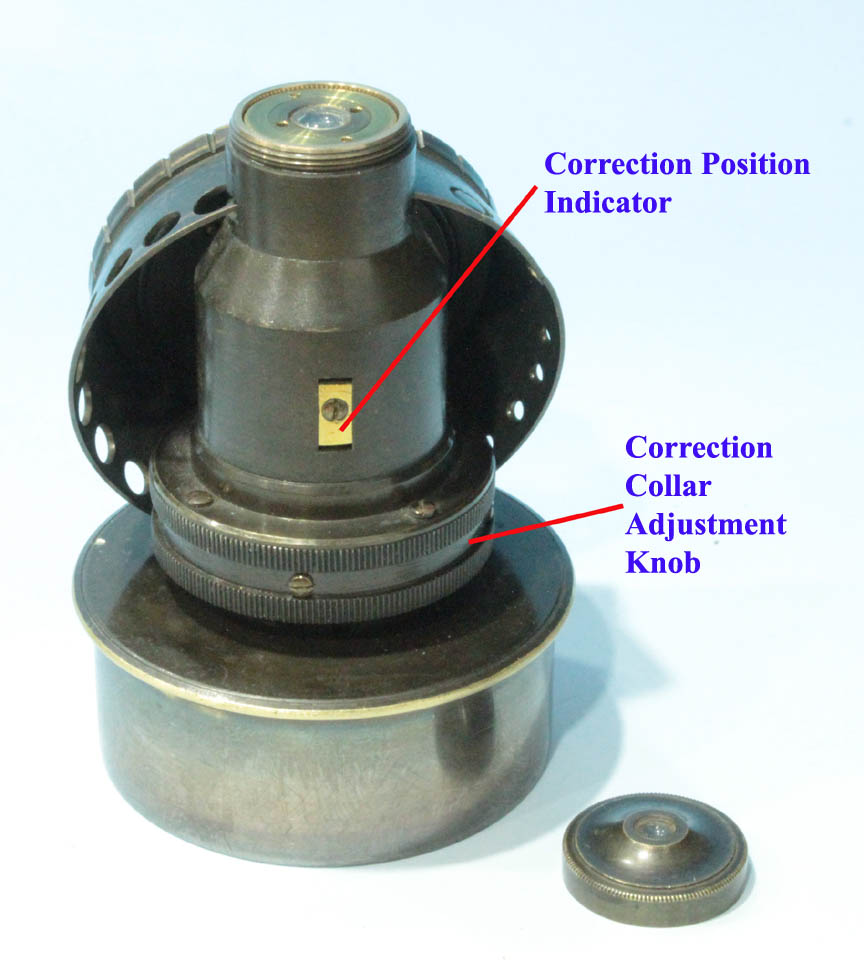
The aperture in use is indicated by a numbered line at the bottom of the round lacquered brass dial on the front of the condenser. This dial is tilted somewhat upward
from vertical which enhances its visibility. There is a blackened pointer at the bottom of the dial with a sprung catch which registers the apertures into place, and also points to the number of the registered aperture. Note that the pointer and aperture number are 180 degrees opposite to the locations of the actual aperture on the rotating conical disk. The apertures are numbered 1 through 19, with 1 being the second to largest opening. The largest opening, located just before number 1, is indicated by a line but is not numbered. This largest aperture presumably is a full aperture. Note that the distance of the un-numbered full aperture line from number 1 is greater than the distance between the numbered apertures. In addition, the first darkground stops is two divisions from the full aperture and there are two divisions between the two darkground stops as well. Each stop and aperture is automatically centered in the optical axis of the condenser by the spring catch. The condenser is also equipped with a knurled knob controlling the correction collar adjustment which corrects for the thickness of the slide. The top optical element is removeable, revealing the uppermost of the remaining elements which all move together when the knurled knob is turned, thereby adjusting the distance between the top element and the other elements.
HISTORY OF THE GILLETTE SUBSTAGE CONDENSER:
In the late 1840's an amateur microscopist known as Mr Gillette
devised the condenser named in his honor. It is often quoted that this occurred in 1850 or 1851, but this is erroneous and likely due to the fact that Ross exhibited the Gillette condenser at the Great Exhibition of 1851. As evidenced by the signature on the example shown here, it was first constructed by Andrew Ross and Registered July 20, 1849. The Gillette condenser went through several iterations over the years.
By 1838 Ross was making objectives with correction collars to correct spherical aberration due to cover slips which varied in thickness. It is not surprising then that he added a correction collar to the Gillette condenser. This theoretically allowed for correction of spherical aberration due to variations in slide thickness, which although standard at 1 mm (0.04 inches) today, varied widely in the middle of the 19th century. In addition, the correction collar of the condenser allowed distributing the light evenly and brightly across the field in the case of a substage that did not have rack and pinion focusing, as this would be difficult to do accurately with a substage that focuses only by sliding. Since most of the aberration of the light beam traveling from the condenser occurs at the periphery of the cone of light, a wider cone of light, with its periphery outside the field of view, can reduce the aberration. Besides having a large cone of light that extends outside the field of view, stopping down the diameter of the beam to only that needed to illumiate the field of view can accomplish the same thing, while at the same time reducing glare. Although theoretically helpful for achieving optimal illumination, a correction collar for condensers was found to be of minimal help compared to simply careful focusing of the substage. Once rack and pinion substages became common, the condenser correction collar was an unnecessary extra expense abandoned even on the later versions of the Gillette condenser itself.
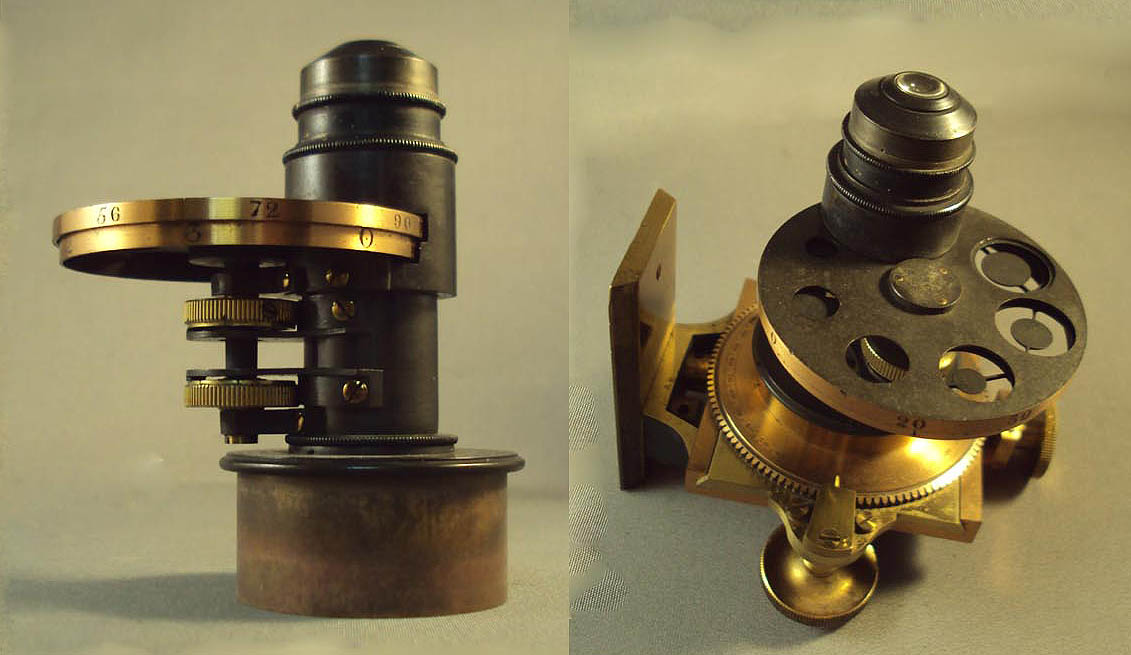 As microscopes evolved, so did the condensers, and an improved version of Gillette condenser utilizes a pair of disks with dark ground stops and apertures with independent controls for each. The example shown to the left is shown separately on the left and installed in a centerable and rotatable Ross substage of about 1880 on the right.
As microscopes evolved, so did the condensers, and an improved version of Gillette condenser utilizes a pair of disks with dark ground stops and apertures with independent controls for each. The example shown to the left is shown separately on the left and installed in a centerable and rotatable Ross substage of about 1880 on the right.




 As microscopes evolved, so did the condensers, and an improved version of Gillette condenser utilizes a pair of disks with dark ground stops and apertures with independent controls for each. The example shown to the left is shown separately on the left and installed in a centerable and rotatable Ross substage of about 1880 on the right.
As microscopes evolved, so did the condensers, and an improved version of Gillette condenser utilizes a pair of disks with dark ground stops and apertures with independent controls for each. The example shown to the left is shown separately on the left and installed in a centerable and rotatable Ross substage of about 1880 on the right.